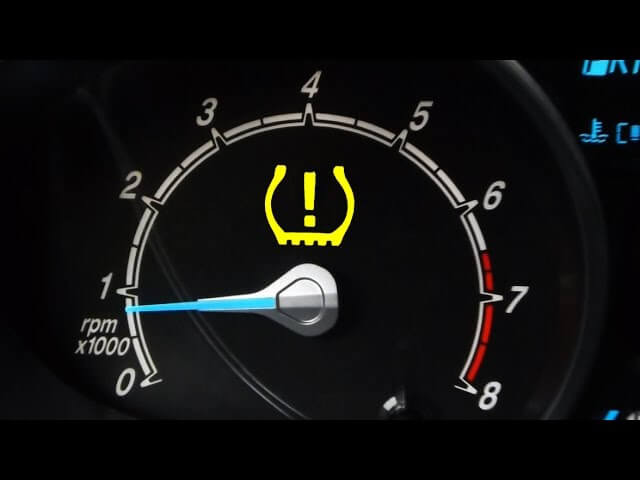
Auto Repair 101 - TPMS System
Next to the check engine light, the most persistent warning light on your car is likely your TPMS system indicating your tire pressure is off. Learn how this system works and why it’s important.

Auto Repair 101 – TPMS System
If you’re like the average driver in Minneapolis or Saint Paul, Minnesota, your dashboard lights up with so many different indicators that you probably ignore the check engine light or under inflated tire warning when they come on.
“My car still runs fine with the check engine light on so why bother with the tire pressures when none of them look flat?”
Sound familiar?
As an auto repair shop educating our customers on how their vehicle works, we must admit that we understand it’s human nature to ignore the warning, but it’s in your best interest to take some time to investigate the issue further.
Keeping your tires properly inflated according to manufacturer recommendations is beneficial for both safety and mechanical operation. In fact, it is so important for safety that the government mandates that new vehicles be equipped with Tire Pressure Monitor Systems (TPMS).
Let’s take some time to explore why it’s important to properly inflate your tires and how your vehicle’s TPMS system assists with this.
Why Proper Tire Pressure is Important
The TPMS system in your car or truck is designed to detect tire pressures and alert the driver when the pressure is over or underinflated because this can lead to unsafe driving conditions.
Underinflated tires can cause uneven wear near the sidewall, sluggish handling, and even decrease fuel economy. It is estimated that your fuel economy drops 1% for every 3 pounds of underinflated pressure – this alone leads to around one fill up per year.
On the other hand, overinflated tires can also cause uneven wear (the middle of the tread will wear away faster), decreased traction, and a rough ride because the vehicle cannot absorb bumps and shocks.

It is for these safety and mechanical reasons that it’s important your car or truck has properly inflated tires.
How Your Vehicle’s TPMS System Works
New vehicles are equipped with a TPMS system that compares the tires desired pressure range against it’s actual pressure. If the pressure is outside of this range, a warning light comes on in the dashboard.
To identify the light on your dash, look for the horseshoe shape with the exclamation point (you may be surprised to learn that this is an image of an underinflated tire….).
There are two types of TMPS systems:
- Direct System: This system has a battery powered sensor inside of each rim that measures tire pressure. This communicates with a receiver that illuminates the warning light as needed.
- Indirect System: This system measures pressure by analyzing a variety of conditions such as wheel rotation speeds to determine tire pressures.
What To Do if Your TPMS Warning Goes Off
If you receive the TPMS warning, the first thing you should do is check the tire pressure manually either with a gauge or at the nearest air station. Compare the value of each tire pressure against the PSI rating indicated on the inside door jamb of the driver’s door and then add or decrease the tire pressure until your tires are properly inflated.
There are a few important points to consider here….

Check Tire Pressures Regularly
You should get in the habit of checking tire pressures often because your TPMS system will only warn you if the pressure is significantly low or high. That means you may be driving without the correct pressure without the warning light alerting you. The easiest way to do this is to keep a manual pressure gauge in your vehicle and use it once a week.
Use Proper Tire Pressure
Second, you should always inflate your tires to the pressure shown on the door jamb and not the tire. Your tire indicates the maximum PSI whereas your door has the value the manufacturer designed the car to have.
What An Intermittent Warning Light Means
Sometimes the TPMS warning light will turn on and off and there are several reasons for this. It’s possible your tire pressure is affected by the ambient temperature - overinflated due to heat and underinflated due to cold. In this case, the friction from driving may cause the tire to heat up and the pressures increases. If the warning light flashes for about 60 seconds and stays on, this is likely due to a faulty sensor and should be replaced.
The proper response in either case should be to manually check the tire pressures and either add or decrease air to the tires or contact your auto shop.
If your car or truck has a pesky TPMS warning light that won’t disappear or you suspect there may be issues with your tires, don’t hesitate to call the experts at Bona Bros.
Our ASE certified technicians have been serving customers for over sixty years in the Twin Cities and we can diagnose and repair any issues you might run into.
